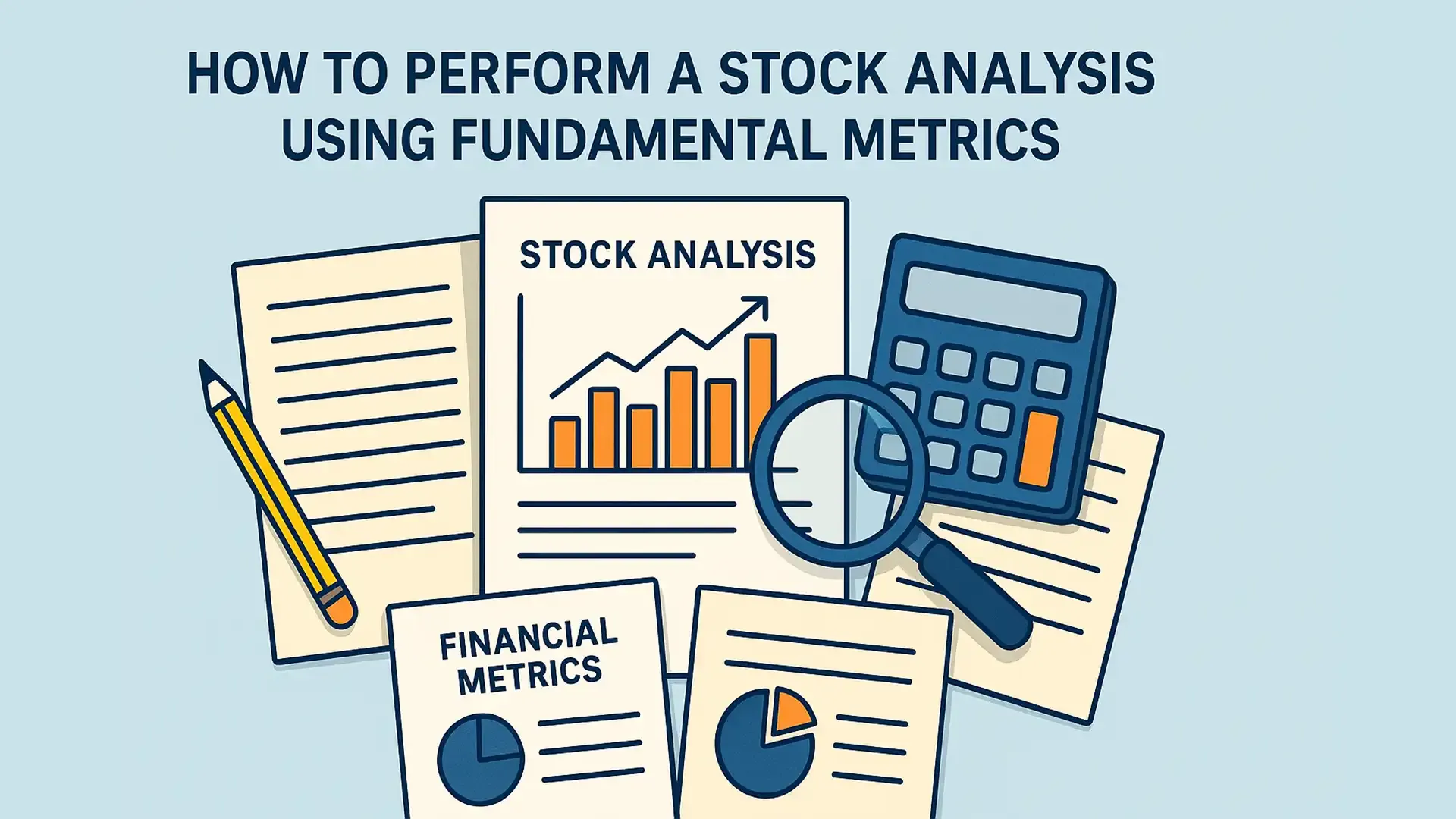Investing in stocks requires more than just picking a company you like. To make informed decisions, investors rely on fundamental analysis, a method of evaluating a company’s financial health, performance, and future prospects by examining its key metrics. This guide provides a detailed, step-by-step overview of how to analyze stocks using fundamental metrics.
What Is Fundamental Analysis?
 |
| Illustration showing financial documents, charts, a calculator, and a magnifying glass for fundamental stock analysis. |
Fundamental analysis is the study of a company’s intrinsic value. It involves evaluating financial statements, management effectiveness, industry conditions, and economic factors. The goal is to determine whether a stock is undervalued, overvalued, or fairly priced compared to its true worth.
Step 1: Review Financial Statements
The foundation of any fundamental analysis lies in the company’s financial reports. Focus on the following documents:
- Income Statement: Shows revenue, expenses, and net profit.
- Balance Sheet: Lists assets, liabilities, and shareholder equity.
- Cash Flow Statement: Tracks cash inflows and outflows, highlighting liquidity and financial stability.
Step 2: Analyze Key Financial Ratios
Ratios simplify complex data, allowing investors to compare companies and industries more effectively. Important ratios include:
- Price-to-Earnings Ratio (P/E): Indicates how much investors are willing to pay per dollar of earnings.
- Price-to-Book Ratio (P/B): Compares stock price to book value, useful for identifying undervalued companies.
- Debt-to-Equity Ratio (D/E): Measures financial leverage and risk exposure.
- Return on Equity (ROE): Shows how effectively management uses shareholders’ equity to generate profits.
- Current Ratio: Assesses short-term liquidity by comparing current assets to liabilities.
Step 3: Evaluate Growth Metrics
Look beyond current earnings to understand future potential:
- Earnings Per Share (EPS) Growth: Consistent growth signals strong business fundamentals.
- Revenue Growth: Indicates demand and market expansion.
- Dividend Growth: Shows commitment to returning value to shareholders.
Step 4: Consider Industry and Economic Factors
Fundamental analysis is incomplete without considering external factors:
- Industry Trends: Is the sector growing or declining?
- Competitive Advantage: Does the company have a durable edge over competitors?
- Macroeconomic Conditions: Interest rates, inflation, and GDP growth impact company performance.
Step 5: Estimate Intrinsic Value
The ultimate goal of fundamental analysis is to calculate the stock’s intrinsic value. This can be done using methods such as:
- Discounted Cash Flow (DCF): Projects future cash flows and discounts them to present value.
- Comparable Company Analysis: Compares valuation metrics with peers in the same industry.
- Dividend Discount Model (DDM): Estimates value based on expected future dividends.
Step 6: Make an Investment Decision
Once intrinsic value is determined, compare it to the stock’s market price:
- If intrinsic value > market price: The stock may be undervalued and worth buying.
- If intrinsic value < market price: The stock may be overvalued, suggesting caution or selling.
Common Mistakes to Avoid
- Relying on a single metric without a holistic view.
- Ignoring debt levels when evaluating profitability.
- Failing to compare ratios within the same industry.
- Overestimating short-term market trends.
Performing a stock analysis using fundamental metrics helps investors separate speculation from informed decision-making. By reviewing financial statements, calculating ratios, considering growth, and estimating intrinsic value, you can identify opportunities with long-term potential. Remember, fundamental analysis is a powerful tool, but combining it with discipline, diversification, and risk management is key to successful investing.
